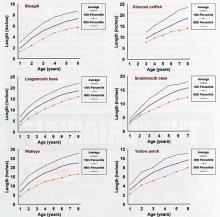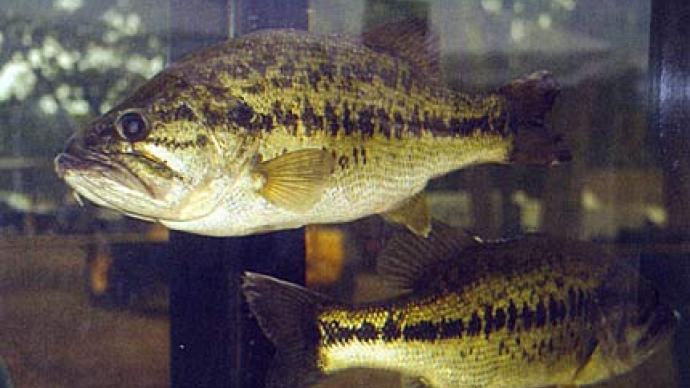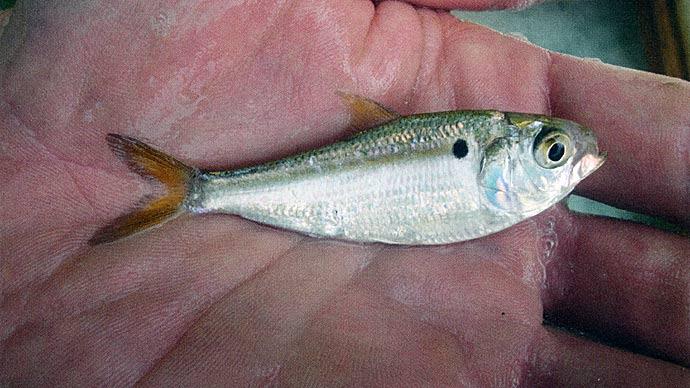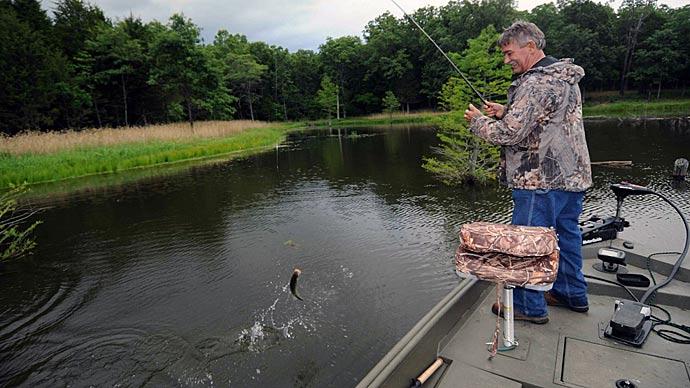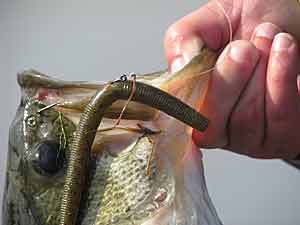
Let's step back for an academic lesson in fish growth today. What are the biggest influences on the growth rates for your fish?
Well, the answer is a complex one. How often have you heard that statement from us darn biologists? However, we can target some likely factors that most influence growth.
Fishes generally exhibit what we call indeterminate growth. Most fishes continue to grow throughout their lives. Their growth rates are determined by food supply, habitat, water quality and competition, among other factors. As long as conditions for growth are satisfactory, fish will continue to increase in length and weight throughout its lifespan. If there are insufficient resources for growth, fish stop growing, but not necessarily die. If resources become sufficient at some time in the future, fish can resume growing.
Fish growth is very much dependent on population density (abundance). Indeterminate growth allows the development of those high-density, slow-growing fish populations that are often referred to as stunted populations. Consider yellow perch growth. In a high-density, slow-growing South Dakota population, yellow perch may reach a length of 5 inches and a weight of 0.04 pounds after four years of growth. In lower-density populations, perch can easily exceed 10 inches and 0.6 pounds after 4 years. That's a big difference in fish fillet. When perch density is high, there is much competition for a limiting factor such as food, and growth is slow. When density is low, food is more abundant, and growth rates are substantially faster. We often see the slow growth rate in ponds with 50-60 pounds/acre of perch, while fast growth rates happen in those with 10-20 pounds/acre.
A similar scenario is true for largemouth bass. When they are at 60-100 pounds/acre, which is relatively common in the Midwest and plains states, growth will be slow. In the same ponds but at 10-20 pounds/acre, their growth will be much faster. Maximum sizes also increase.
Now, low density alone does not ensure fast growth for fish populations. The available food supply is quite important, which of course ties back to the quality of habitat. The quality of habitat for a fish depends on the needs of each species, which can be quite different. Fish growth actually should be thought of as a reflection of food availability in relation to population size. A decrease in food base (prey) or an increase in predator fish abundance can lead to predator populations with slower growth. The converse is also true.
Because fishes are cold-blooded organisms, growing season length affects fish growth rates and ultimately also influences natural mortality rates. In general, slower-growing individuals of a fish species tend to live longer than faster-growing individuals of that species. There certainly are exceptions, but this general rule often holds. For example, an 18-inch walleye in a Kansas reservoir is likely to be 3 years old. Such populations may have natural mortality rates near 40% per year (see Mortality Rates more information on mortality rates). That means 40% die each year, on average, with or without anglers harvesting them. An 18-inch walleye in a northern Canada lake may be age 15 or even older! Natural mortality rates for such populations are likely to be less than 10% per year.
Biologists often collect annual growth rate information. From this information, we can determine such things as the adequacy of the prey base for the number of predator fish present. If the predator fish population is exhibiting slow growth rates and prey species are found to be in low supply relative to the predator population, the biologist can modify harvest regulations or, if the predator is a stocked fish, modify future stocking rates. In addition, habitat modifications might be implemented to address such a problem.
Now, we did cover the fish aging topic in a past issue as well (Fish Aging). There is quite a bit of art to fish aging, and experience is certainly helpful.
The next step for biologists, after aging fish, is to use comparative data to assess fish growth. Many conservation agencies have determined average growth rates for fish species in their region. In addition, regional summaries of growth data are available for many fish species. These biologists ask the same question that you might ask: compared to what is possible for ponds at my geographic location, are my fish growing fast, average, or slow? Fortunately for all of us pondmeisters, several biologists put together some species-wide averages for fish growth! These standards were based on hundreds of populations from all across that geographic range for each fish species. North, south; streams, ponds, rivers, lakes, and reservoirs. We thought that sharing that information with you would provide you with a better understanding of fish growth at your locale. Remember now, these are wild fish populations. They are not fish culture situations, where fish growth can be pushed closer to biological limitations for a fish species.
So what does this have to do with you, dear pondmeister? Look at Table 1. Compare your fish with those in the table. Are your fish growing fast enough to suit you? If not, there are several things you can do to change the equation. First, make sure your habitat is appropriate for the fish you are trying to grow. Don't forget about the food chain. Habitat for forage fish is just as important as it is for your game fish. If your game fish population density is too high for the amount of forage fish, the solution is much easier. Go fishing. Catch some fish and remove them from the system. There are a number of things you can think about to keep your pond and its inhabitants upwardly mobile... in terms of growth.
There should be plenty of food for thought for you here! No pun intended. Slow-growing: are they in a location with a short growing season, are the waters too infertile, is density too high? Fast-growing: long growing season, fertile (productive) waters with plenty of food, low population density? We bet you can think of other reasons as well!
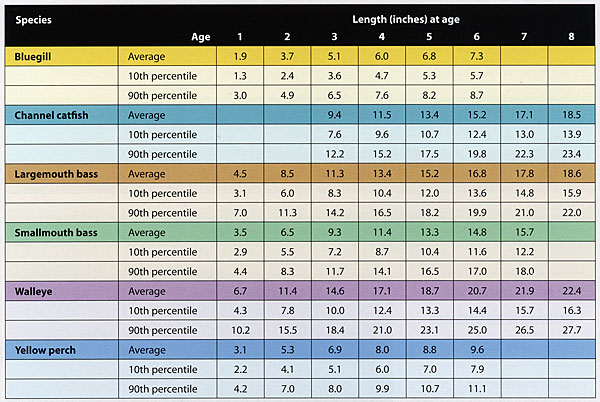
Dave Willis is department head in the Department of Wildlife and Fisheries Sciences at Dakota State University.
Reprinted with permission from Pond Boss Magazine

